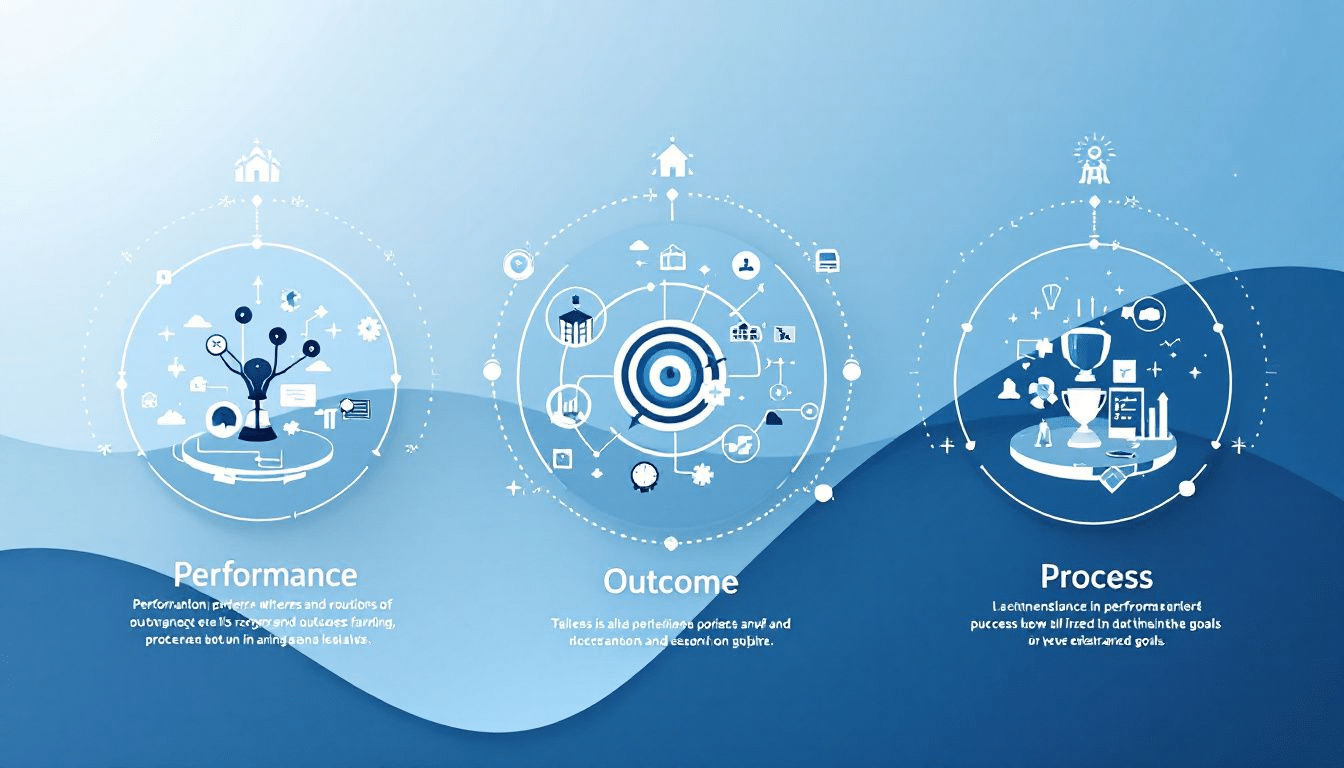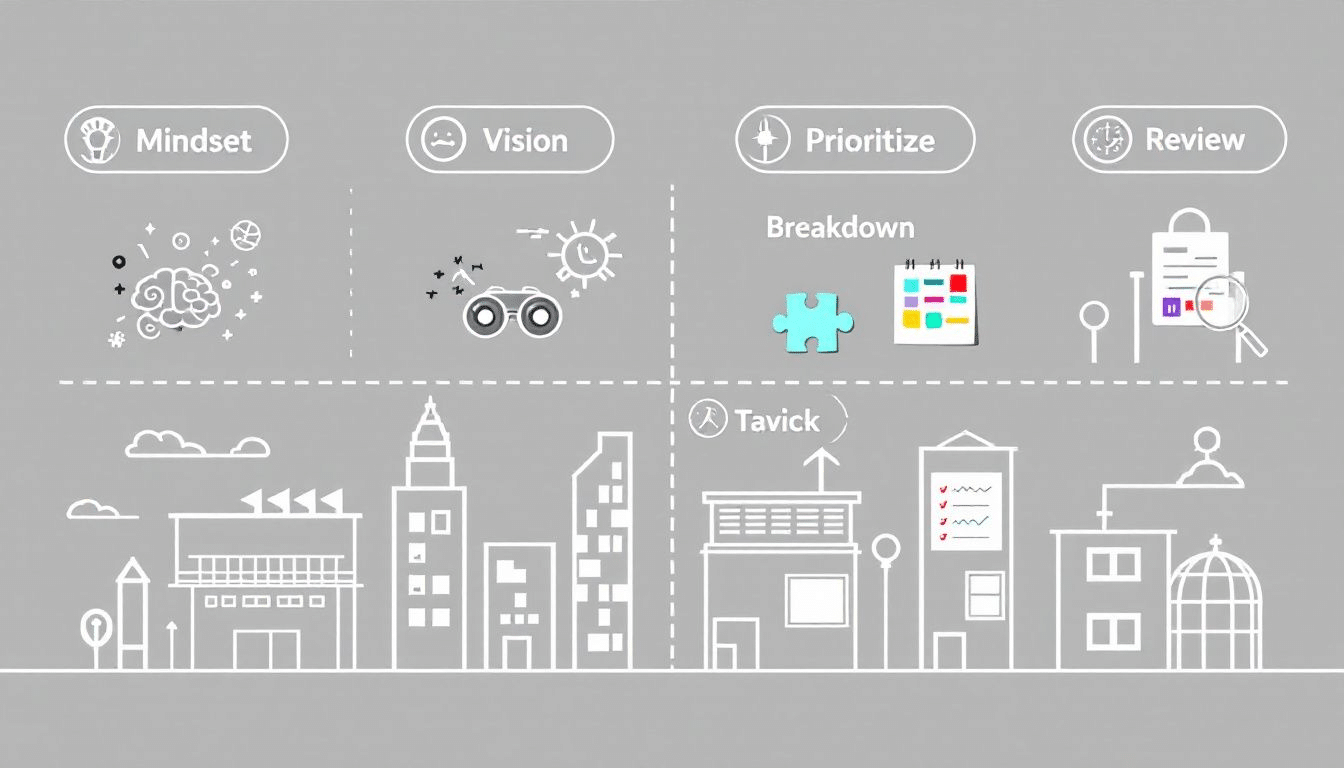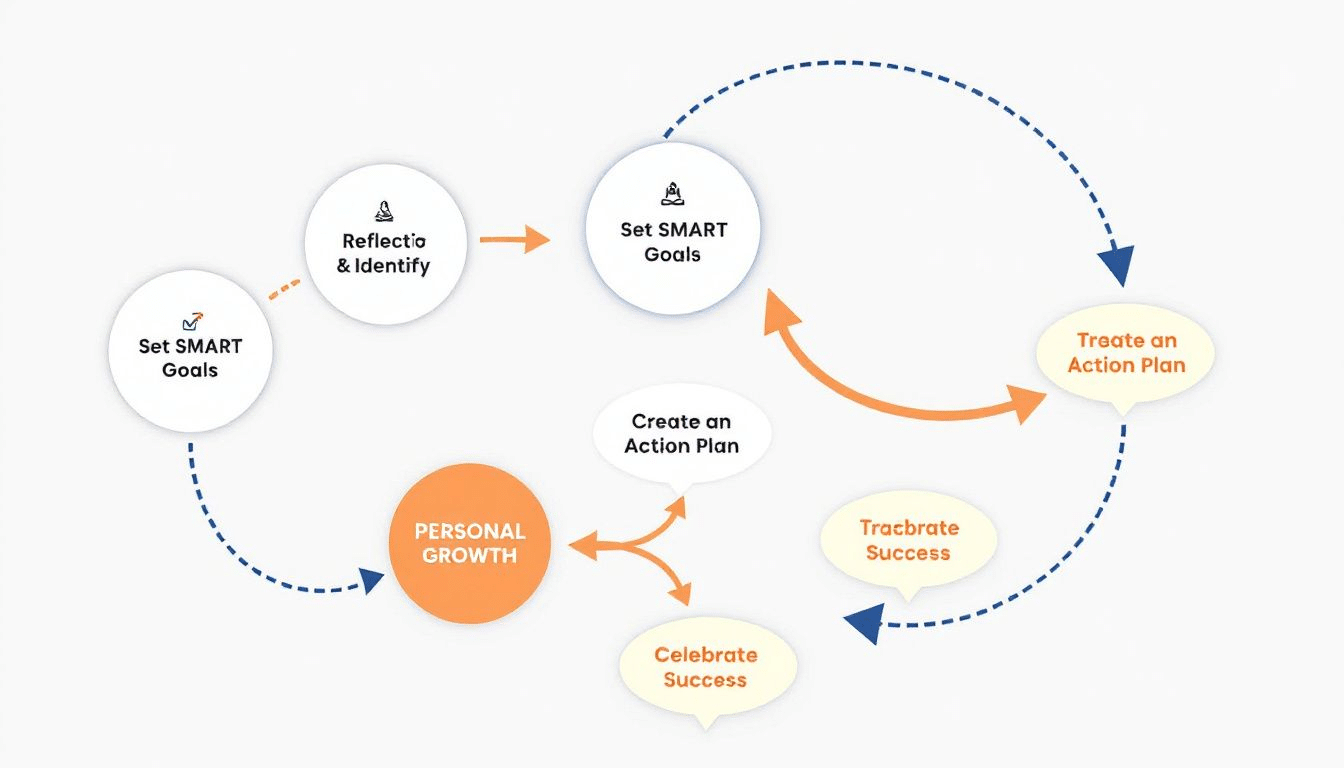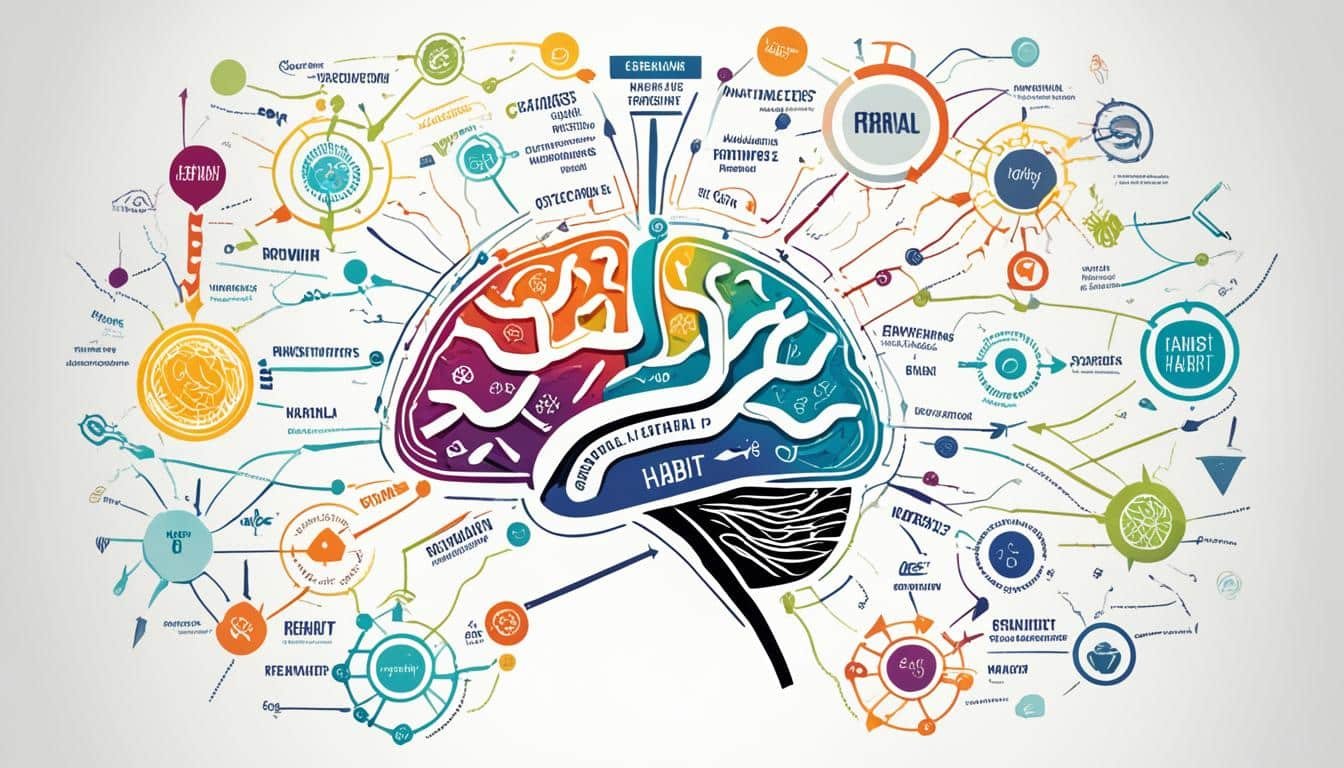Ever wondered how different types of goal setting can help you achieve success? This article breaks down various types of goal setting methods, like short-term, long-term, and lifetime goals, as well as performance, outcome, and process goals. We’ll also explore how different types of goal setting strategies can be applied to areas of your life, like career, health, and personal development, focusing on each type of goal setting to maximize your potential.
Key Takeaways
Goal setting transforms visions into concrete plans by defining clear, specific targets for personal and professional growth.
Goals can be categorized by time (short-term, long-term, lifetime) and results (performance, outcome, process), each serving distinct purposes.
Using SMART criteria and tools like digital apps or physical planners enhances goal-setting effectiveness and accountability.
Understanding Goal Setting

Goal setting is more than just making a wish list. It’s a powerful goal setting process that helps you turn your vision into reality by setting specific targets and making a plan to achieve them. It can be challenging due to the constant changes in life, but it’s also an essential practice for personal and professional growth.
Setting goals provides direction and focus, acting as a roadmap. This encourages self-discovery and helps clarify your true desires, ensuring alignment with your values.
What Are Goals?
Goals are specific targets that require planning and effort to achieve desired outcomes. Think of them as missions you’re on, with your values as the foundation. They can be quantitative or qualitative, but the key is that they are clear, specific, and well-defined. For example, transitioning into a new career or going back to school are goals that require intentional planning and alignment with your personal values.
As you grow and evolve, your approach to goal setting can shift from being a tedious task to an exciting tool for personal alignment and achievement. Effective goals keep you motivated and help you stay on track, turning your aspirations into reality.
Why Is Goal Setting Important?
Setting goals is crucial because it gives you a way to measure accomplishments and change behaviors. Goals push you through comfort zones and facilitate growth and improvement. They help you stay motivated, especially during tough times, reminding you that you are working towards something with purpose.
Achieving goals brings a sense of accomplishment and boosts self-confidence while encouraging accountability and personal reflection. Consistently setting and achieving goals leads to significant personal and professional growth, making life more fulfilling.
Types of Goal Setting Based on Time

When it comes to goal setting, one size does not fit all. Goals can be categorized based on the time frame needed to achieve them. Time-based goals include short-term, long-term, and lifetime goals. Each type serves a different purpose and helps in balancing immediate needs with future aspirations.
Short Term Goals
Short-term goals are specific, measurable tasks that you aim to achieve within a few months to a year. They act as stepping stones, breaking down larger goals into manageable chunks. For example, creating a reusable event-planning checklist within a quarter can be a short-term goal.
These goals help you stay organized and monitor your progress, making long-term objectives feel less overwhelming. Connecting short-term goals to larger ones ensures coherence in planning and keeps you moving forward.
Long Term Goals
Long-term goals require years of effort and are aimed at significant aspirations. These goals provide a sense of direction and purpose, helping you plan for the future. Examples of long-term goals include pursuing a career in marketing or onboarding 2,000 new employees in three years.
Achieving long-term goals requires careful planning and sustained effort. They help you think globally and plan where you want to be in several years, ensuring that your short-term actions align with your big-picture vision.
Lifetime Goals
Lifetime goals are broad aspirations that require sustained effort over a long period. These goals align with your personal values and represent your life’s purpose. Creating a vision board of desired future outcomes can help you prepare for lifetime goals.
Writing down lifetime goals trains your mind to seek opportunities to achieve them. They may not always be achieved, but they serve as a guiding star, keeping you focused on what’s truly important in life.
Types of Goal Setting Based on Results

Goals can also be categorized based on the results they aim to achieve. These include performance goals, outcome goals, and process goals. Each type offers different levels of control and focuses on various aspects of achievement, from actions and behaviors to end results.
Performance Goals
Performance goals focus on specific actions and outcomes. They often require setting sub-goals to develop the necessary skills. For example, establishing a target to increase sales by 5% within a quarter is a performance goal.
These goals measure progress with precise metrics, maintaining motivation and focus. Performance goals set the standards for executing process goals and focus on the results produced.
Outcome Goals
Outcome goals are focused on the end result, defining what you want to achieve. These goals are crucial for setting a clear target and measuring success. For instance, beginning a career in marketing is an outcome-oriented goal and serves as an outcome goal, aligning with outcome oriented goals.
Success in outcome-based goals is determined by satisfaction with your performance. They are easier to assess through a simple achieved or not achieved evaluation, providing a straightforward way to measure progress.
Process Goals
Process goals emphasize the actions and behaviors needed to achieve an outcome. These goals focus on the journey rather than the end result. For example, committing to exercise three times a week is a process goal that supports overall process oriented goals and fitness goals.
Process goals prioritize actions and help track growth to ensure continuous progress. However, focusing solely on the process might sometimes reduce the drive to achieve specific results.
Types of Goal Setting Based on Areas of Life

In addition to time and results, goals can be set based on different areas of personal life. This approach ensures balanced personal development and significant life changes.
The key areas include financial, career, health and fitness, family, social, intellectual, and spiritual goals.
Financial Goals
Financial goals focus on improving money management, saving, investing, and eliminating debt. These goals can unlock other types of goals by providing financial stability. For example, achieving six figures in five years or donating 5% of your salary by next year are professional financial goals.
Financial goals help prioritize spending and saving, ensuring the achievement of other important life goals without financial stress.
Career Goals
Career goals are crucial for personal goals fulfillment and effective use of talents in the workplace. These goals can focus on advancement, job satisfaction, and fulfilling roles. Pursuing a promotion or gaining additional responsibilities are examples of career goals.
Career goals provide growth opportunities and structured guidance. Transitioning from a dead-end job to a more fulfilling position can significantly improve professional life.
Health and Fitness Goals
Health and fitness goals enhance mental health by providing a sense of purpose and direction. These goals can include aspects like diet, exercise, and sleep hygiene.
Examples include setting strength goals or improving overall fitness.
Family Goals
Family goals focus on improving relationships and fostering collective wellbeing among family members. These goals can be set at any time of the year and require the involvement of all family members.
Prioritizing family goals just below spiritual goals can enhance family harmony.
Social Goals
Social goals aim to build meaningful connections and improve social health. These goals involve improving existing relationships or establishing new ones.
Being intentional in finding real friendships and making an effort to connect are key to achieving social goals.
Intellectual Goals
Intellectual goals encourage ongoing education and personal growth through diverse learning opportunities. These goals can include enrolling in courses, reading books, or engaging in activities that stimulate the mind.
Spiritual Goals
Spiritual goals focus on discovering a deeper sense of self. This exploration occurs through various spiritual practices. These goals can indeed involve religion, such as attending church or practicing meditation. Examples of spiritual practices include tarot or moon journaling.
Spiritual goals help maintain focus on values and alleviate stress and anxiety, ensuring you remain grounded and connected to your inner self.
Steps to Effective Goal Setting

Effective goal setting involves clear steps that ensure you stay on track and achieve your desired outcomes. Here are some essential steps to help you set and achieve your goals.
Define Your Goals Clearly
Highly specific goals increase the chances of successful accomplishment. Specificity ensures clarity and focus, motivating consistent effort. Tools like Asana can assist in setting and tracking goals, while traditional planners enhance memory retention through physical writing.
Clearly defined goals provide a roadmap, making it easier to stay organized and committed.
Break Down Large Goals
Breaking down large goals into smaller, manageable tasks encourages easier achievement and better progress tracking. Short-term goals assist in achieving long-term goals by translating them into actionable tasks.
Stepping stone goals, such as tracking monthly expenses to reduce spending, are milestones that help you stay on track while working towards larger goals.
Write Down Your Goals
Writing down goals solidifies intentions and reinforces commitment. Documenting goals fosters accountability, increasing the likelihood of follow-through.
Use the SMART Criteria
The SMART framework includes five key components: Specific, Measurable, Achievable, Realistic, and Time-bound. This criteria is essential for setting clear and attainable goals. Digital goal-tracking platforms often use the SMART framework to ensure goals are specific, measurable, and time-bound.
Using the smart goals framework increases the likelihood of achieving goals and maintaining motivation. For example, a SMART goal could be boosting social media reach by 20% by the end of the month.
Establishing milestones and adapting timelines based on progress keeps you on the right track.
Track and Adjust Your Goals
Regularly reflecting on progress is necessary to adapt goals and maintain motivation. Reflecting on goals helps learn and assess progress, ensuring you stay on track. Flexibility is essential for adjusting plans when facing challenges, allowing adaptation without losing momentum.
The SMART framework assists in creating measurable goals, enhancing accountability and ensuring that you can track and adjust your goals effectively. Reflecting and learning about your goals should occur every quarter to maintain focus and drive.
Tools and Techniques for Goal Tracking
Documenting goals significantly boosts the likelihood of achieving them. Using a combination of digital tools, physical planners, and accountability partners creates a comprehensive approach to tracking and achieving goals.
Each method has its unique benefits, catering to different preferences and needs.
Digital Tools
Using a goal tracker app is an easy way to monitor progress and stay motivated. Strategic planning through these apps enhances goal achievement by providing a systematic and structured approach.
Setting time estimates and comparing actual execution time helps track the progress of sub-goals effectively.
Physical Planners
Physical planners provide a tangible way to write down and visualize goals, enhancing commitment. Engaging in a tactile method of tracking goals can increase commitment and focus.
For those who prefer writing, traditional planners provide a tactile experience that can be very satisfying.
Accountability Partners
An accountability partner significantly increases the chances of achieving goals by providing motivation and support. They help clarify goals and offer constructive feedback, assisting in breaking down barriers.
Regular check-ins with your accountability partner ensure that you stay committed and on track.
Summary
Goal setting is a transformative process that can guide you toward ultimate success. By understanding the different types of goals based on time, results, and areas of life, you can set targets that are clear, achievable, and aligned with your values. Effective goal setting involves defining your goals clearly, breaking them down into manageable tasks, writing them down, and using the SMART criteria to ensure they are specific and measurable.
Tracking and adjusting your goals with the help of digital tools, physical planners, and accountability partners keeps you motivated and focused. Remember, the journey of achieving your goals is just as important as the destination. Start setting your goals today and take the first step towards a more fulfilling and successful life.
Frequently Asked Questions
What are the different types of goals based on time?
Goals can be categorized as short-term, long-term, and lifetime, depending on how much time you plan to invest in achieving them. Each type serves a unique purpose in your personal development journey.
Why is it important to write down your goals?
It’s important to write down your goals because it solidifies your intentions and keeps you accountable, making it more likely you’ll achieve them. Plus, having a visible reminder can really motivate you to stay on track!
How does the SMART criteria help in goal setting?
Using the SMART criteria makes your goals clear and achievable by ensuring they’re Specific, Measurable, Achievable, Realistic, and Time-bound. This method not only boosts your chances of success but also keeps you motivated along the way.
What role do accountability partners play in achieving goals?
Accountability partners are key for staying motivated and receiving constructive feedback, keeping you committed to your goals. They’re your cheerleaders and guides, making it easier to stay on track!
How can digital tools aid in goal tracking?
Digital tools like goal tracker apps can really boost your goal-setting journey by helping you monitor your progress and stay motivated. Plus, they add a structured approach that makes achieving your goals feel more achievable!





